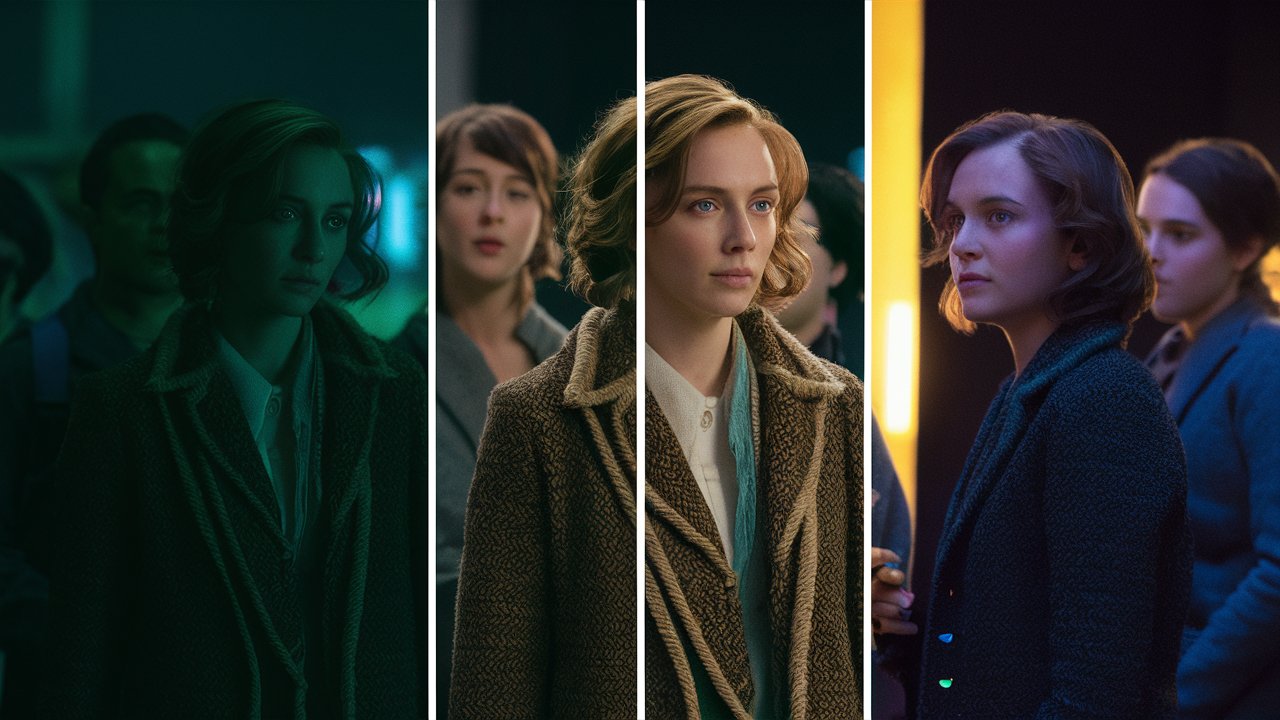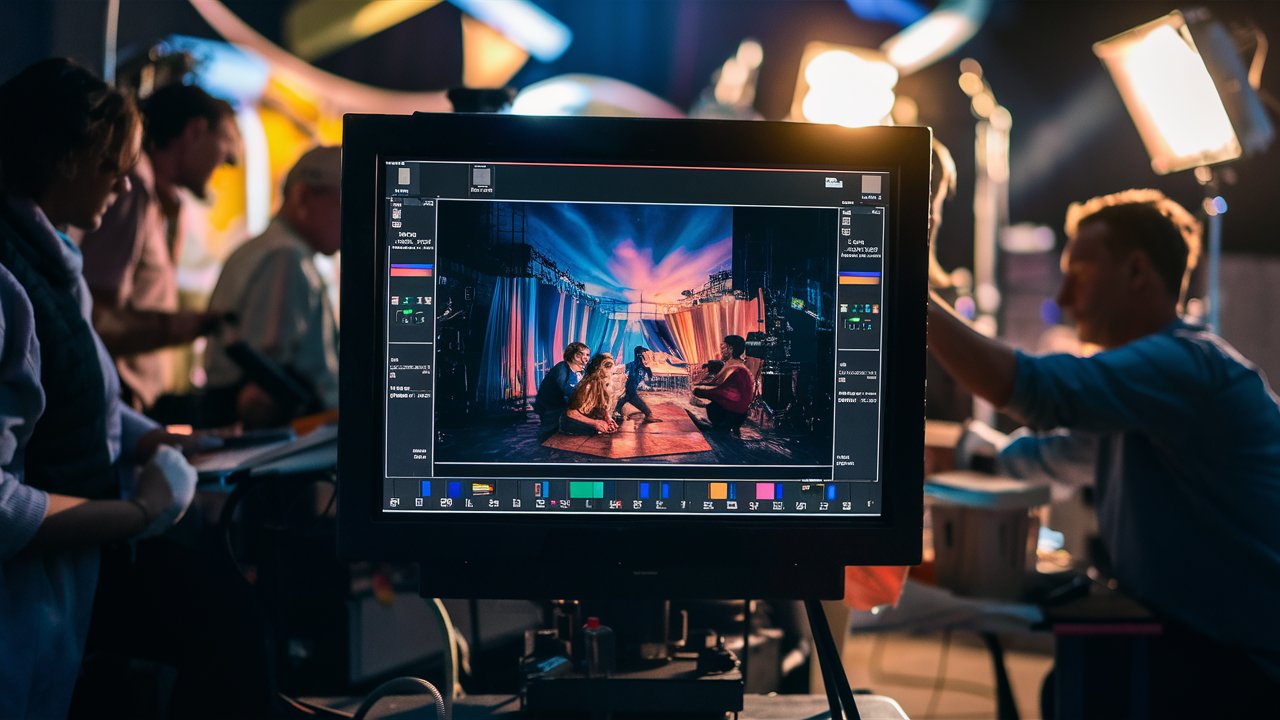As a filmmaker, I’ve witnessed firsthand the transformative power that color correction wields in the realm of cinema. It’s not merely about adjusting hues on a screen; it’s about crafting an emotional journey for the audience—a symphony of colors that whispers melancholy, dances with jubilation, and paints scenes with the brush of narrative intention.
Through the intricate dance of color grading, we filmmakers become visual maestros, conducting emotions and atmospheres with each stroke of adjustment. The cinematic canvas becomes our playground, where every shade, every contrast holds the potential to reshape reality into a tapestry of visual poetry.
In my own experience as a storyteller through film, I’ve come to appreciate color correction as more than just a technical step—it’s an art form in itself. Each hue carefully selected, each tone meticulously finessed to encapsulate the essence of what words often fail to convey.
The spectrum stretches far beyond mere visuals; it wraps its tendrils around our senses, guiding us through realms where warmth is palpable, suspense lingers in every shadow, and joy bursts forth like blooms under a sunlit sky.
This exploration into the magic of color correction delves deep into the heart of filmmaking—an alchemical process where ordinary images transmute into extraordinary visions that resonate long after the screen fades to black. Join me on this colorful odyssey as we unlock the hidden treasures of the cinematic spectrum and discover how hues hold within them the very soul of storytelling itself.
Importance of Color Correction in Film.
As a filmmaker, when I step into the realm of color correction, I embark on a journey that transcends mere visuals. With each hue carefully calibrated, I wield the power to shape emotions and orchestrate symphonies of mood within the hearts of my audience.
Picture a scene bathed in warm golden tones, evoking a sense of nostalgia and comfort as if wrapped in a blanket woven from memories. Conversely, a palette tinged with icy blues can plunge viewers into an abyss of suspense or melancholy, a chilling embrace that lingers long after the credits roll.
In my own experience as a cinematographer, I have witnessed firsthand how visual consistency acts as an invisible thread stitching together the tapestry of a film. Every frame painted with precision and care contributes to the seamless flow that guides viewers through the narrative landscape.

Consistent color grading not only enhances the viewing experience but also serves as a silent maestro conducting emotions; it ensures that transitions between scenes are fluid, preserving the immersive spell cast upon audiences.
Colors whisper tales untold and harbor secrets that only attentive eyes can decipher. Through meticulous color correction, filmmakers engage in an art form where every shade carries weight beyond its chromatic confines.
Symbolism dances through hues like shadows at dusk, hinting at deeper meanings woven into the fabric of storytelling. Whether cloaked in darkness to evoke mystery or awash in vibrant reds symbolizing passion or danger, colors become vessels carrying subliminal messages waiting to be deciphered by astute viewers willing to delve beneath the surface.
Color Correction Techniques.
As I delve into the intricate art of color correction, I find myself entranced by the ways in which visual storytelling transcends the mere arrangement of pixels. One of the most captivating techniques I employ is grading for narrative arcs. This entails a careful orchestration of colors to mirror the emotional crescendos and quiet lulls that dance through a film’s storyline.
Just as a skilled composer weaves melodies to evoke varying emotions, so too can a filmmaker manipulate hues to amplify the intended impact on viewers. Imagine a scene where vibrant reds intensify moments of passion, while desaturated blues hint at impending sorrow, tugging at heartstrings with each chromatic shift.
In the realm of color correction, contrast manipulation emerges as a powerful ally in guiding audience gaze and enhancing visual depth within frames. With deft precision, adjustments in contrast levels can sculpt shadows and highlights, sculpting a three-dimensional world that beckons viewers deeper into its folds.

Picture a noir film where stark contrasts between light and shadow transform an ordinary street corner into a mysterious rendezvous point or envision how heightened contrast in an action sequence sharpens focus on every heartbeat-pounding detail—a symphony conducted not just by camerawork but by the mastery of color.
Harnessing complementary color schemes stands as another brushstroke in the palette of color correction magic. By pairing opposites on the color wheel, filmmakers create striking visuals that seize attention and infuse thematic elements with profound meaning.
The interplay between warm oranges and cool blues might signify clashes between characters’ conflicting perspectives, while harmonious greens and purples suggest unity amidst diversity.
It’s akin to orchestrating a grand ball, where each guest—the colors—mingle and waltz together in perfect harmony under the flickering candlelight of cinematographic vision, inviting viewers to lose themselves in this choreographed spectacle of sight and sentiment.
The Artistry Behind Color Grading.
As a filmmaker navigating the intricate dance of color correction, I’ve come to appreciate the artistry embedded within each chromatic choice. Colors hold an extraordinary power to evoke emotions deeply rooted in cultural associations and psychological triggers.
Imagine a film enveloped in rich, vibrant reds, igniting passion and intensity in every frame, or a serene landscape bathed in cool blues, evoking feelings of tranquility and reflection. These emotive chromatic choices not only enhance visual appeal but also serve as silent narrators, whispering stories beyond what words can convey.
Seasonal influences offer yet another layer of complexity to the canvas of color grading. Just as nature transitions through its cycles of rebirth and decay, filmmakers harness the essence of seasons through subtle color manipulations.

Picture a scene drenched in golden hues, mirroring the warmth and vibrancy of summer, or one draped in muted earth tones that speak of autumnal melancholy. By integrating seasonal motifs with finesse, filmmakers imbue their visuals with thematic resonance; each color becomes a brushstroke painting themes of renewal, decay, or transformation onto the cinematic tapestry.
In my own experience navigating the realm of subtle visual cues within color grading processes, I’ve learned that even the slightest tonal shift can alter a viewer’s perception significantly. Consider a scene where shadows deepen imperceptibly to hint at looming dangers, or where light cascades gently to signify moments of hope amidst darkness.
These nuanced adjustments guide viewers through intricacies woven into a film’s narrative fabric like hidden threads waiting to be unraveled. It is in these delicate manipulations that the true magic of color correction emerges – transforming mere images into living reflections of emotion and meaning.
Unlocking the Cinematic Spectrum:
A Technicolor Symphony of Artistry In the realm of cinema, color correction functions as a maestro conducting an orchestra of hues, tones, and shadows to compose a visual symphony that resonates with audiences on a profound level.
As I reflect on my own journey through the vivid tapestry of color grading, I am reminded of how this intricate craft elevates filmmaking beyond mere storytelling into the realm of sensory immersion and emotional resonance.
With each meticulous adjustment and strategic choice of grading, filmmakers breathe life into their narratives, infusing every frame with intentionality and depth. The cinematic spectrum becomes a canvas where emotions swirl in vibrant technicolor, where shadows dance with light to create chiaroscuro masterpieces that captivate our senses.

Through the alchemy of color correction techniques, we embark on an unforgettable visual voyage where each scene is not just seen but felt in its entirety.
As we delve deeper into the magic of color correction, we realize that it is not merely about enhancing visuals; it is about unlocking the very essence of storytelling itself. By manipulating colors with precision and artistry, filmmakers open doors to immersive worlds where viewers are not passive spectators but active participants in a shared cinematic experience.
Each brushstroke of color becomes a brushstroke of emotion; each gradient shift a subtle whisper that guides us through the labyrinthine depths of human experience. In this realm where reality meets fantasy and imagination transcends boundaries, we find ourselves immersed in a kaleidoscope of storytelling possibilities – all made possible by the transformative power of color correction.

I am a highly experienced film and media person who has a great deal to offer to like-minded individuals. Currently working on several exciting projects, I am a film and media practitioner for over a decade. I have achieved a great deal of success in my professional career.








